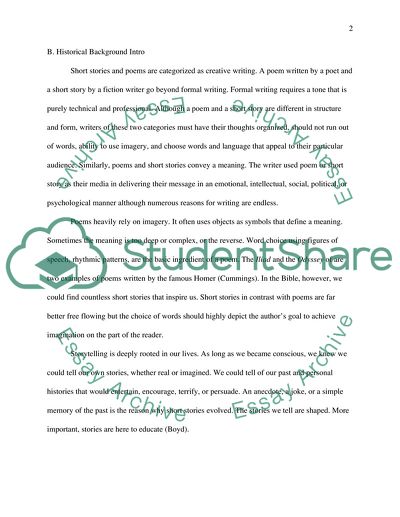Cite this document
(“Comparison of The Red Wheelbarrow and Winter Night and Their Authors Research Paper”, n.d.)
Comparison of The Red Wheelbarrow and Winter Night and Their Authors Research Paper. Retrieved from https://studentshare.org/literature/1736985-compare-and-contrast-a-poem-and-short-story-and-their-authors
Comparison of The Red Wheelbarrow and Winter Night and Their Authors Research Paper. Retrieved from https://studentshare.org/literature/1736985-compare-and-contrast-a-poem-and-short-story-and-their-authors
(Comparison of The Red Wheelbarrow and Winter Night and Their Authors Research Paper)
Comparison of The Red Wheelbarrow and Winter Night and Their Authors Research Paper. https://studentshare.org/literature/1736985-compare-and-contrast-a-poem-and-short-story-and-their-authors.
Comparison of The Red Wheelbarrow and Winter Night and Their Authors Research Paper. https://studentshare.org/literature/1736985-compare-and-contrast-a-poem-and-short-story-and-their-authors.
“Comparison of The Red Wheelbarrow and Winter Night and Their Authors Research Paper”, n.d. https://studentshare.org/literature/1736985-compare-and-contrast-a-poem-and-short-story-and-their-authors.


